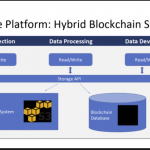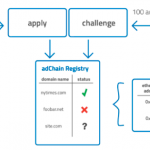How Blockchain Answers the Demand for Transparent Transactions
— December 19, 2017

LauraTara / Pixabay
Without a doubt, blockchain is the next disruptive technology. In the demand for transparent transactions, blockchain is a game changer. And, it’s not just emerging startups that are leading the blockchain charge. Global institutions, including IBM, are doubling down on blockchain technology. It can enhance transactional security and deliver increased transparency. Blockchain is also decentralizing information dissemination.
According to Forbes, blockchain technology is “set to trigger a revolution in all the institutions concerned with value.” This includes “banks, insurance companies, payment processors, energy markets, and so on.” And, it’s why suddenly a whole host of applications for storing value have appeared. The change has finally allows company to transfer value over the Internet. This can now be down without a trusted third party.
All that “implicit and inherent” trust stuff sounds good. However, savvy investors want more than a few assurances. They want to know precisely how blockchain works. The key to blockchain’s success is its cryptographic algorithms. This makes data more secure. Also, manufacturers and businesses reduce costs. Blockchain technology’s decentralized, distributed ledger alleviates security concerns. It does this through public verification. Therefore, no single authority can approve transactions. Instead, there is network consensus.
Financial institutions are jumping on the blockchain bandwagon. They can deliver solutions that are fast and secure. All parties can have equal access. Deutsche Bank executives understand blockchain technology’s growth potential. They predicted that, by 2027, 10% of the gross domestic product would be regulated or tracked by a blockchain protocol.
However, cryptocurrency growth is overshadowing blockchain’s potential. Consumers and investors follow the rapidly changing dynamics in the crypto market. For instance, PrettyCo.in makes it fun and easy for individuals to instantly track crypto currencies. They see how their investments are performing.
Thinking Beyond Bitcoin
SolidOpinion’s Engagement Tokens are another example of how blockchain-powered tokenization can take online reward systems to the next level. Readers participate in discussions and receive points for their online engagement. Decentralizing the commenting system returns audience control to the true content creator.
Blockchain promises to improve transparency for other industries. It holds vast potential for the nonprofit and charity realms. For example, it can make it possible to accurately track where donated money goes and how it is spent. Blockchain technology could enable donors to track every penny given to those in need. Then, it can ensure that funds find their way to the intended recipients.
Because of blockchain, funds can be transferred without bank accounts. This speeds aid delivery. This includes the United Nation’s World Food Bank trial program. Syrian refugees received cryptocurrency vouchers to use at specified markets to purchase food. Over 10,000 refugees benefited from the distributed currency.
Everywhere, people are demanding more transparency. They want distributed access to transactions and information. Blockchain technology is thus poised to take over the world. Everyone wants to increase trust and transparency in value exchanges of all shapes and sizes. And, blockchain technology has the answer.
Business & Finance Articles on Business 2 Community
(50)













